She has been an advocate of reform pedagogical methods, and since finding God, it has been a pivotal part of her profession to represent Christ among children. In the interview, Józsefné Tóth, a prominent member of Hejőkeresztúr Reformed Congregation and teacher of Hungarian and Geography at the local elementary school, discusses the disadvantage-compensating and status-management significance of the so-called “Complex Instruction Program” (CIP), brought to national renown by her school, biblical education and the true duties of Reformed schools.
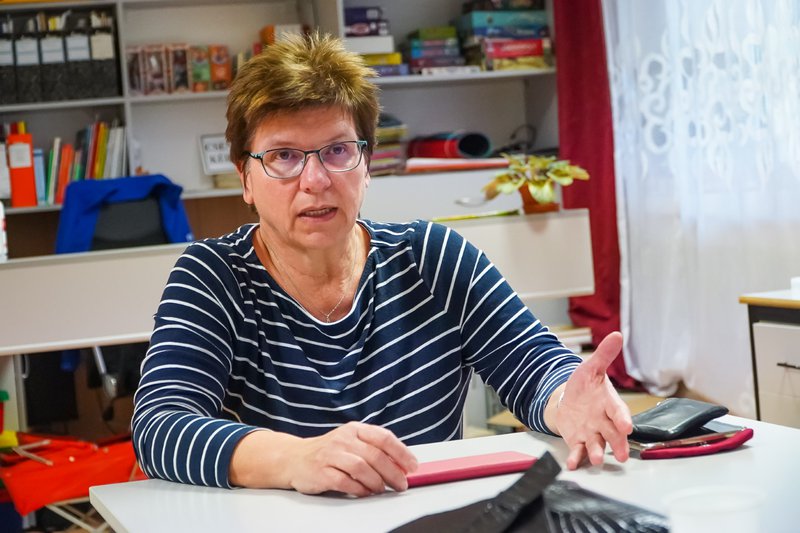
When the school first adopted CIP, you were on maternity leave with your fourth child. Did you find it difficult to get used to the new system?
Not really, although I had some difficulty in phrasing open-ended questions: my first CIP lesson plan took three weeks to polish. I received a great deal of help from our close-knit and supportive teaching staff, and it is still true today that we can always rely on one another. The attitude of the program was not foreign to me, as I had been aware of and using the Spencer Kagan cooperative learning method – I had always been convinced that educational methods have to change in this area.
To what extent does this attitude originate in your Reformed faith?
I can say that this time next year I will have been a child of the Lord for thirty years. This fact has meant a fundamental change in my attitude towards students. I have remained a “regular” teacher, but with more empathy and attention. Subsequently, my teaching methodology expanded when I learnt about drama pedagogy and cooperative learning, but what was still missing was tackling the realities of the school. What is more, I was in danger of becoming burnt out professionally.
IV. Béla Elementary School in Hejőkeresztúr has long been known as a pioneer in Hungary of the reform pedagogical method called Complex Instruction Program (hereinafter: CIP). The program has been developed by Stanford University in Palo Alto (California, USA) in order to bridge the gap between Spanish-speaking immigrants as well as their children and English-speaking students.
The program is suitable to be used among students who have varying sociocultural backgrounds and significantly differing levels of knowledge. The emphasis is on group work and providing students with a sense of success, which facilitate effective teaching and reduce differences in children’s intellectual abilities and status – requiring creative energies from teachers as well, when they are drafting lesson plans.
The leadership of the Hejőkeresztúr elementary school first heard about CIP in 2000 at a conference in Pécs, and they were the first to adapt the method to fit a Hungarian setting. Thanks to the program, both Roma and Hungarian, better-off and disadvantaged students can be active during lessons, and the sense of success opens up new perspectives for them. CIP has been implemented in nearly a dozen schools that are qualified institutions, and over two hundred schools have participated in CIP training or have heard about the method in the framework of grant programs.
And you had relatively little experience as a teacher at that point.
Yes, barely ten years, but the constant issues of discipline and student behaviour made me start looking for reform pedagogical opportunities. Of course, when I encountered CIP, I weighed it against the Scripture, because there are countless appealing programs coming from the US or the so-called developed West, but when examining them deeply, we can discover that they are difficult to reconcile with Christian values. After my conversion I realised that Waldorf education is problematic in this sense, with its background in Rudolf Steiner’s anthroposophy.
Is CIP free from ideologies?
Absolutely. What is more, it is also valid from a theological perspective, since including those on the periphery, finding the hidden talents in children are all in line with the Bible. Still, during the training it was a common misconception that we do nothing but praise children throughout the lesson. However, nobody gets praised without a reason. We emphasise positive reinforcement and evaluate real performance – which is quite different from traditional pedagogy. As a student, despite getting the best grades, I was never really praised because my teachers knew I could perform well and therefore expected me to get straight As.
I often heard from fellow teachers and family members that too much praise would make children too self-confident.
However, if a low status student never receives positive reinforcement, we should not be surprised when the Pygmalion effect becomes a reality: the student believes that they are not good at anything. We work really hard to turn this around: to make students realise what they are good at.
It seems that not only do students enjoy the tasks they are given, they also have a great sense of community – or is this only the outsider’s view?
I am sure they would say that same, and CIP has helped a lot in this area. Let me tell you an example to illustrate this. We have a satellite school in Szakáld, where students in Grades 1-3 study in a multigrade classroom, and come to our school from Grade 4 on. Before introducing CIP, the Szakáld students always had their own clique throughout elementary school, and this never changed despite class trips or other community events. But when we started using CIP and paid attention to separating these students when forming groups, their integration improved greatly.
I am not saying that students suddenly become angels: we still experience cursing and aggression, but there is a difference in how extensive it is and how we handle it. We see the difference outside the classroom as well: if two boys work together during a lesson, they will not end up kicking each other during the break. We were pleasantly surprised that a direct consequence of CIP lessons has been an improvement in students’ behaviour.
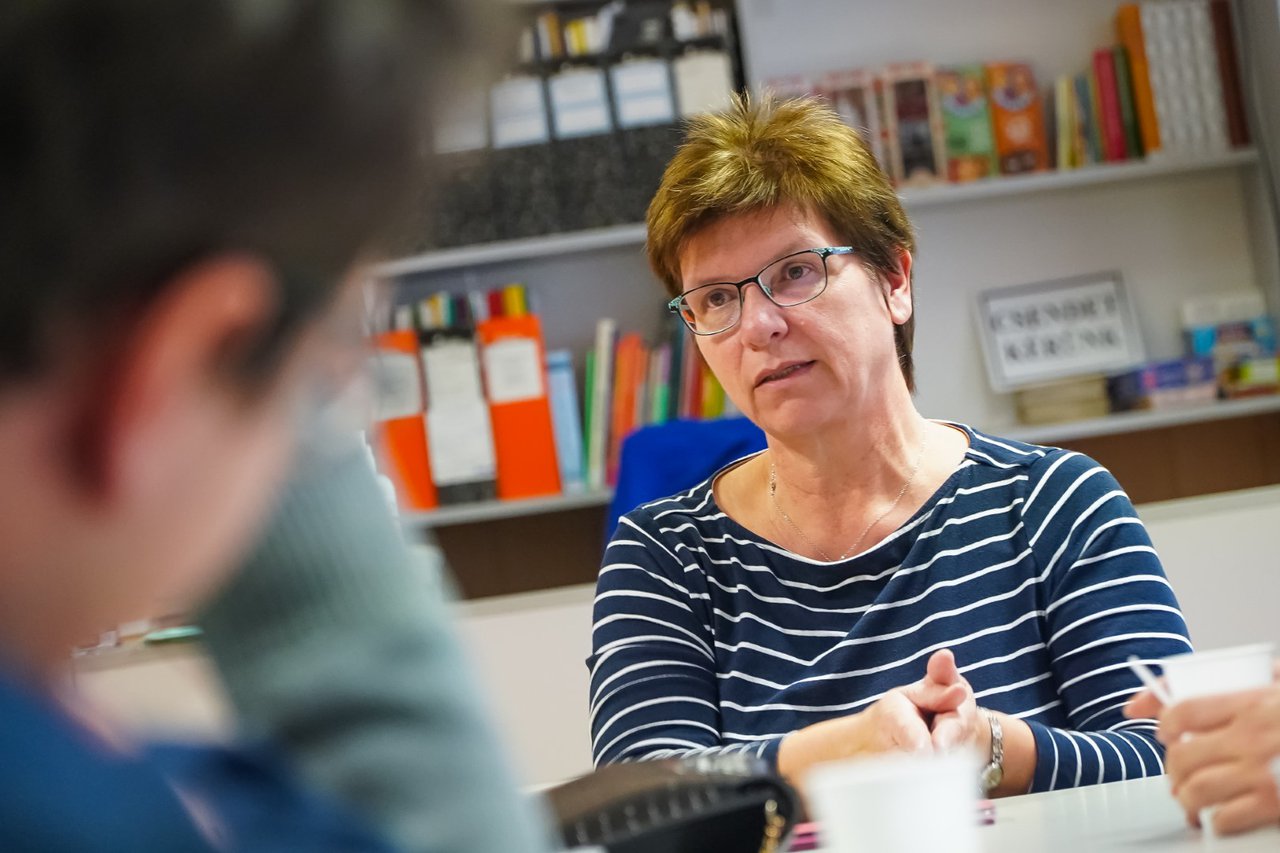
What is the sociocultural background of the students?
65% of our students suffer from multiple disadvantages. Out of the rest, 10-15% are on the verge of two different categories of poverty – sometimes it is a question of a few hundred forints. In Hejőkeresztúr, there are a couple of poorer Roma families whose children attend our school, but in Szakáld, the majority are Hungarian. Most families in Hejőszalonta are employed through the public works scheme and are relatively poor. The so-called “native” Roma are descendants of traditional craftsmen, and after the break-up of Roma settlements in Miskolc, many families moved into the village – and the majority of problems are among these groups. Alcoholism is raging, and some parents refuse to participate in the public works scheme despite their financial and food insecurity, which at times leads to the removal of children from the home. We hear that already in kindergarten, children are more and more difficult to handle.
How can you apply CIP in such a constantly changing situation?
The program itself is constant, and is able to play the role of dealing with the current situation – which, in my view, is not true for any other Hungarian public education program. But since the gap is ever wider among children in terms of socialization, we need to pay a great deal of attention to individual differentiated instruction. During a non-CIP lesson we need to differentiate seven or eight levels, and at times our work has to be entirely individualized. This is very demanding on the teacher, and such lessons are more difficult to prepare for than a CIP lesson, but the end justifies the means: there is no way one can teach with the same method a straight A student and one whose handwriting is still illegible in Grade 6.
What is your relationship like with the parents?
We pay a lot of attention to keeping in touch with almost every parent on a daily basis via telephone, Messenger and also in person. In order to foster more effective communication, we have a progam called Intergenerational Dialogue, when parents are invited to certain lessons, they form groups and get questions from students in a variety of topics. These they have to answer in front of the class, just like in a CIP lesson. One of our form teachers undertook to build a lesson plan on the theme of “What would I have done differently?”, inviting parents who had dropped out of school or had children at a young age. I feel that nothing can be as effective as discussing such topics in a classroom setting.
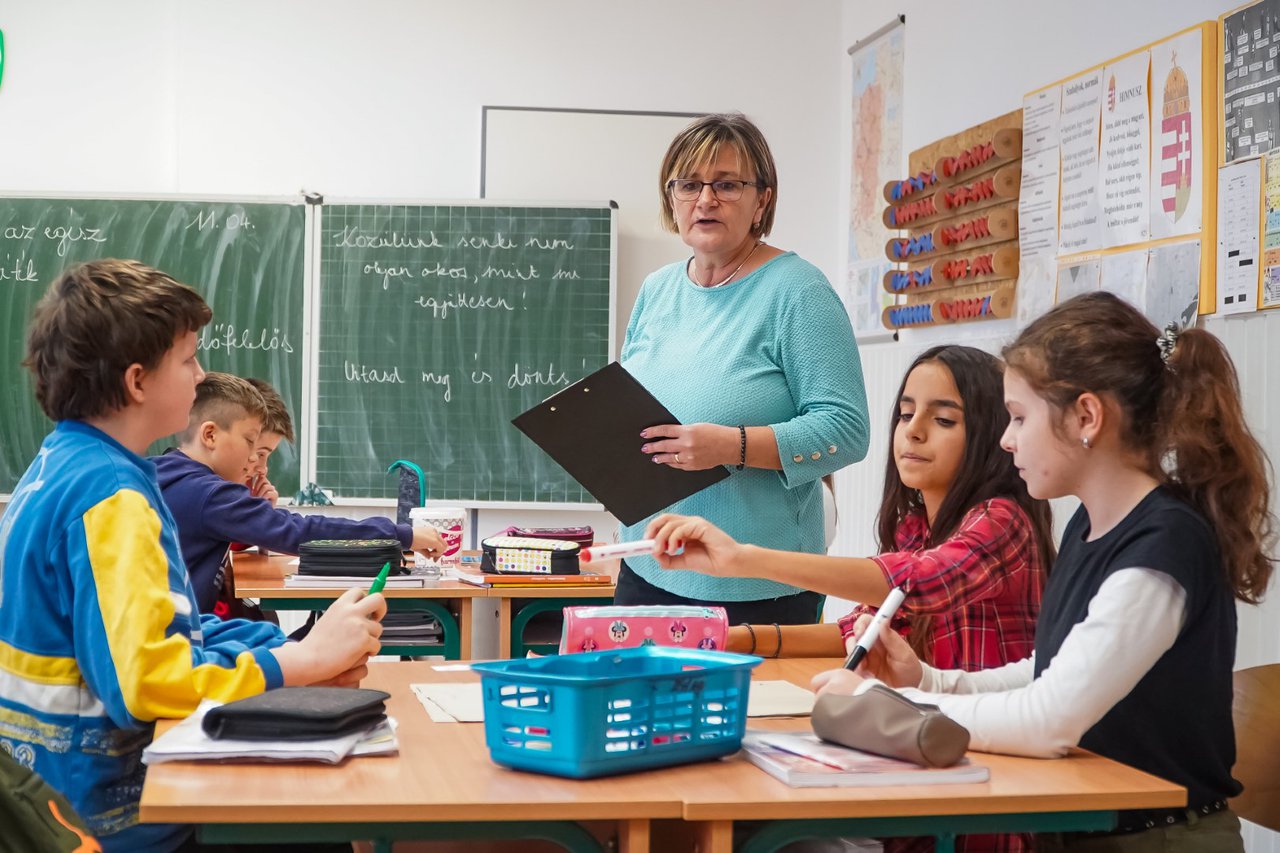
CIP-lesson in the Hejőkeresztúr elementary school
Does the school follow up on the students once they leave?
We get feedback from secondary schools until the end of Grade 10 about how our former students perform. The majority of our alumni return to tell us about their joys and struggles. They often say how much they miss methods like ours in secondary school, and how they suffer from the lack of such methods. They typically choose schools that fit their abilities, and are able to perform well there. It is a positive effect of CIP that weaker students end up performing well in their new school, becoming some of the better students. Those who performed well in our school are also successful in more competitive schools.
What percentage of students is this true for?
Naturally, we do have students who drop out, but this happens mostly for family or financial reasons. The latter reason can be alleviated with secondary school scholarships. To be honest, our students get a somewhat sheltered upbringing. At our school, they do not face discrimination because of their background, and they face discrimination for the first time in secondary school.
How interested are other schools in the program?
The best scenario is when the majority of the teaching staff is ready for a change – in this case they not only visit us, but they express their interest in participating in a thirty-, sixty- or ninety-hour training. On the other hand, we also get casual visitors who just pop in to see how things are at our school. They often say it is easy for us because the children are so good. But the fact of the matter is, we do not do CIP because the children are good. On the contrary, the children become more disciplined because we do CIP. CIP is present in many institutions, but some of them have given it up. In order for the program to be successful, a lot of energy has to be invested – and CIP cannot be successful without a close-knit and supportive teaching collective.
What is the attitude of Reformed schools to CIP?
Several institutions have started implementing the program. Szentmártonkáta, for example, now has a qualified CIP school, and the teachers have presented demonstrations on the church district level as well.
What is your opinion of the growing tendency of Reformed educational institutions being engaged in “elite education,” resulting in Roma and disadvantaged children having no place there – who, as a result, become victims of segregation?
I find this to be a huge problem, and it is easy to find such examples nearby: all Hungarian children from Hejőpapi attend the Reformed school of Mezőcsát, and most Hungarian parents from neighbouring villages choose that school as well.
The Reformed community has always had a bourgeois-intellectual attitude, but we are setting a really bad example if we do not fulfil the mission we have been given. If the church is not willing to help those in need, those who suffer from poverty or other woes, who will be?
If changes are not made shortly, we will soon reach the level of complete segregation: state schools will fight for survival, while church institutions will become even more prosperous, thus widening the already significant gap among the different layers of society.
We must face the fact that the number of Roma citizens is rising, and unless these children receive adequate education and the adults are absorbed by the labour market, there is going to be an enormous catastrophe in our society.
To what extent are you able to influence the education system?
Our school principal, dr. Emese Nagy Kovácsné is engaged in active lobbying in order to popularize CIP and the values we represent. As a former associate professor at Eszterházy Károly Catholic University, she did her best to inform all kinds of educational institutions about the program, and currently, as head of the Teacher Training Institute of the University of Miskolc, she is a true ambassador, fighting for making CIP a part of teacher training. The greatest obstacle is the centuries-old reflexes that are still an integral part of the community of teachers.
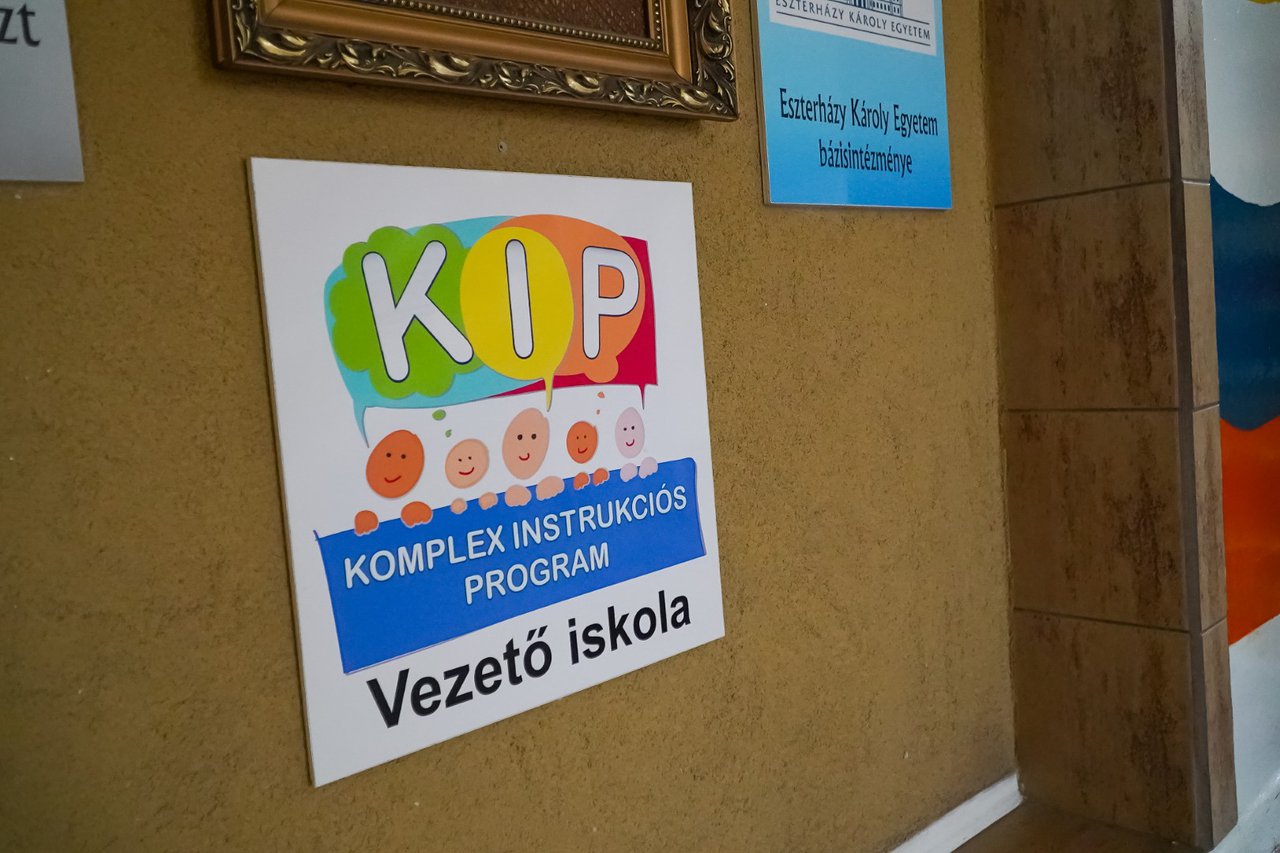
What would the ideal education system look like, if it were up to you?
While researching CIP, I encountered the method in which work stations are created within the classroom, where the learning material can be studied in a way that is tailored to children’s interests, where children are in charge of determining how to go about doing the exercises. I would love to work in a place where the teacher is a facilitator, an aide, accompanying students on their learning journey. However, even CIP is a giant leap for in many places, and my vision is even more liberal and informal, which is unimaginably far from the current education system that mostly relies on frontal instruction.
How realistic do you think a radical, system-level change is?
It is definitely not something that is going to be a reality in the near future. If teacher training were to be transformed, CIP and similar methods could, instead of being something foreign, become natural for those getting a teaching degree.
In an institution like yours, where there is so much emphasis on group work and cooperation, what challenges have arisen over the past twenty months, amid school shutdowns due to COVID-19?
We knew that there would be negative consequences, but we only realised how serious the situation had become when we returned to school in September. The social distancing rules eradicated the essence of CIP: the children’s behaviour deteriorated, they became impatient and mean – issues that we had already overcome at one point. CIP is not something that one does for a while and then waits for the positive outcome: it is to be employed constantly. Already in the previous school year, we started re-introducing the program into lessons, and this past September we began fully implementing it again.
In our Grade 1 class a chasm appeared between better and worse performing students depending on who had technological devices and Internet access and who did not. I am deeply saddened by the fact that we have practically lost some students from Grade 8 because of all the lessons they missed. And even if there were devices in the family, we often had to teach the parents first how to use them.
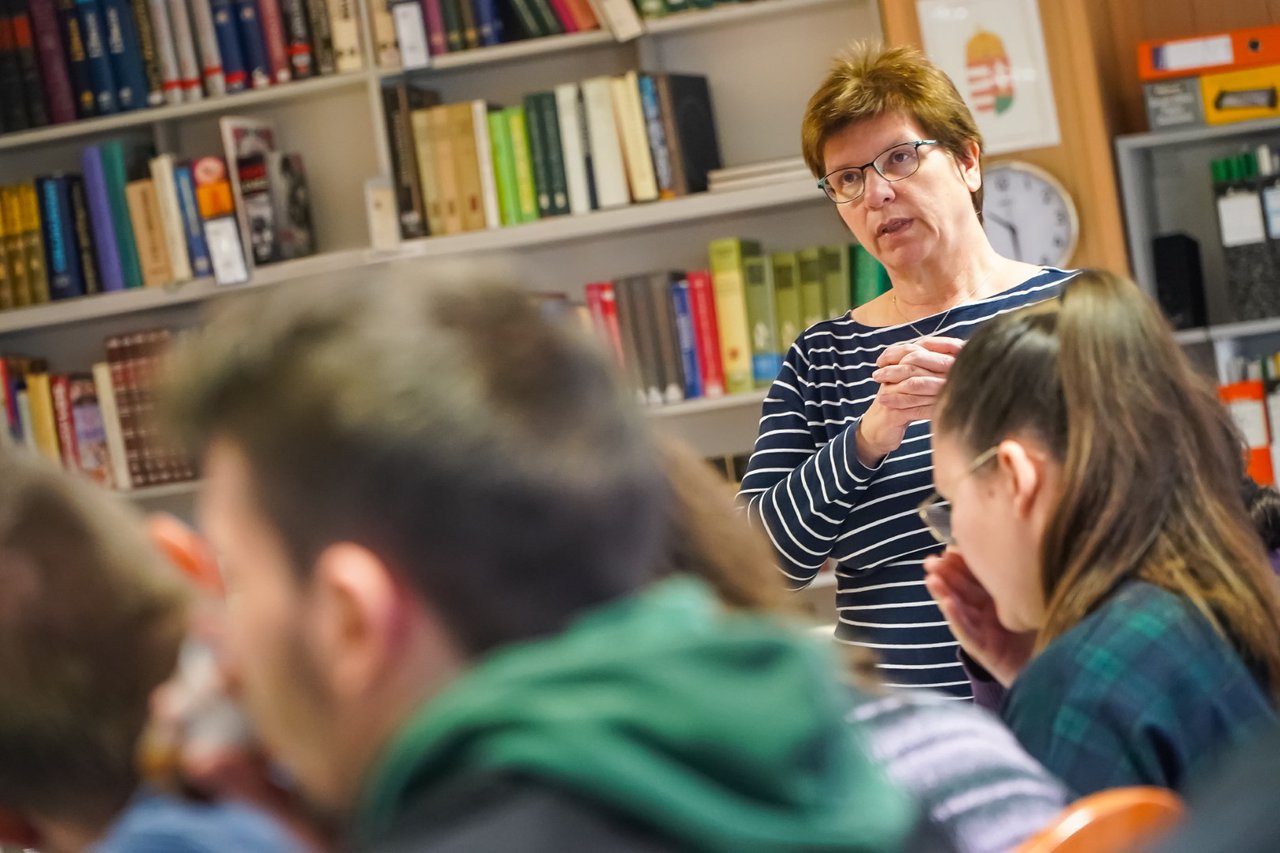
When it came to online education during school shutdowns, several telecommunications companies offered electronic devices to schools as part of their CPR – did Hejőkeresztúr benefit from such schemes?
No, we did not. But to be fair, the greatest challenge was not a lack of devices but the lack of Internet access. Nevertheless, the lockdown also had some positive outcomes: parents contacted us of their own accord to share how their children were getting along. “Now I know things I never learnt at school myself!” said a Roma mum who had grown up in state care, who helped her child constantly during the period of online schooling.
Do you have an action plan for a potential lockdown in future?
During the first wave we were unable to have any online lessons, but during the second wave we had more success, although with many difficulties, to reach students via the public education online platform KRÉTA. Apart from the lack of electronic devices and Internet access, the most significant obstacle was the fact that teachers had to work on a variety of platforms: in KRÉTA, on paper, via Messenger and video. We have not developed an online education program; we would return to some tried and tested methods if another period of lockdown started.
The school’s motto is: „Everybody is good at something!” – To what extent is this your personal conviction?
I do believe in the truth of this sentiment, that there is a way to reach every child. In my quiet early morning moments I ask the Lord to be present with me in the classroom, since without Him I would not be able to achieve anything. Even so, I still get disheartened at times or feel that I have failed, but God helps me to get over such feelings. I get a lot of encouragement from the biblical story when Elijah is in the cave and hears the meek voice of the Lord. This is what I also want to hear, and do what God has called me to do as a teacher.
Our principal often says that we have no time to waste. There are children in our care, for four to eight years. We can either stand idly by, waiting for a miracle or major changes in our public education system, or do what we can in the here and now. There is a line in the hymn “O Zion, Haste”: “Let none whom He hath ransomed fail to greet Him, Through thy neglect”. This is something to bear in mind both at work and my ministry to God. I have to represent the Lord among the children. I do not want to have any graduating student to leave without me having done everything I could to achieve that goal.
Translated by Erzsébet Bölcskei